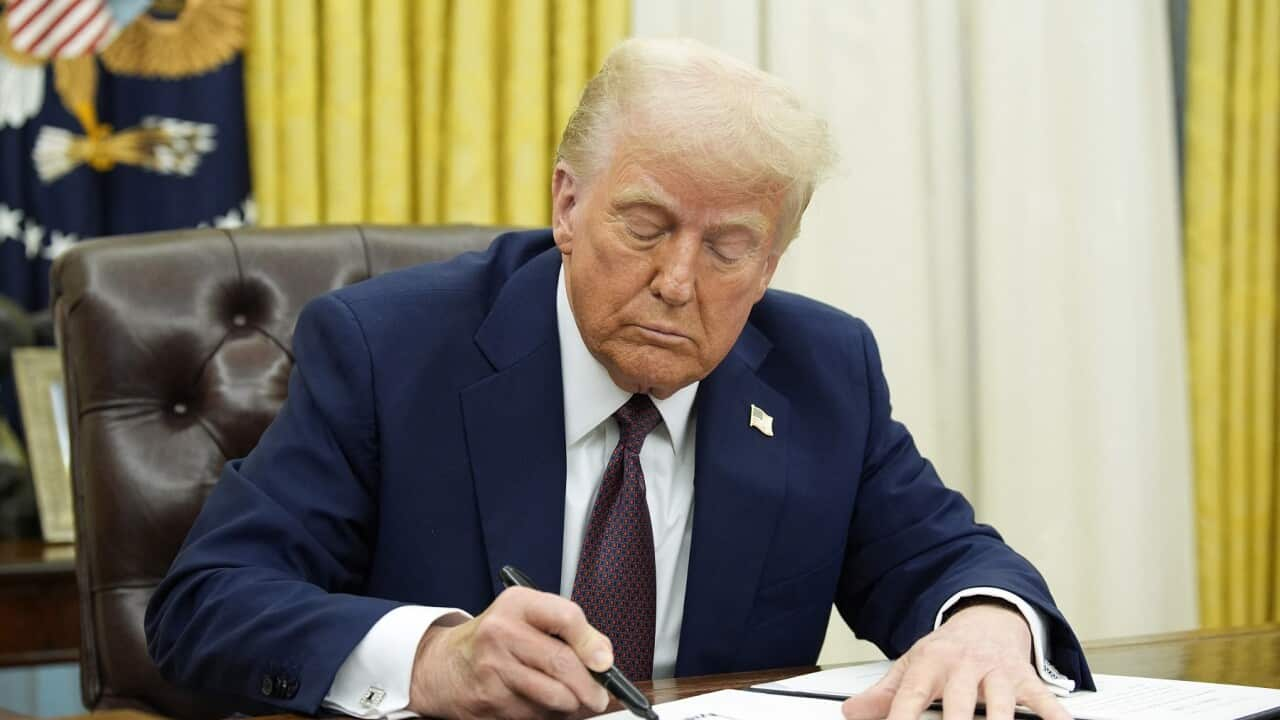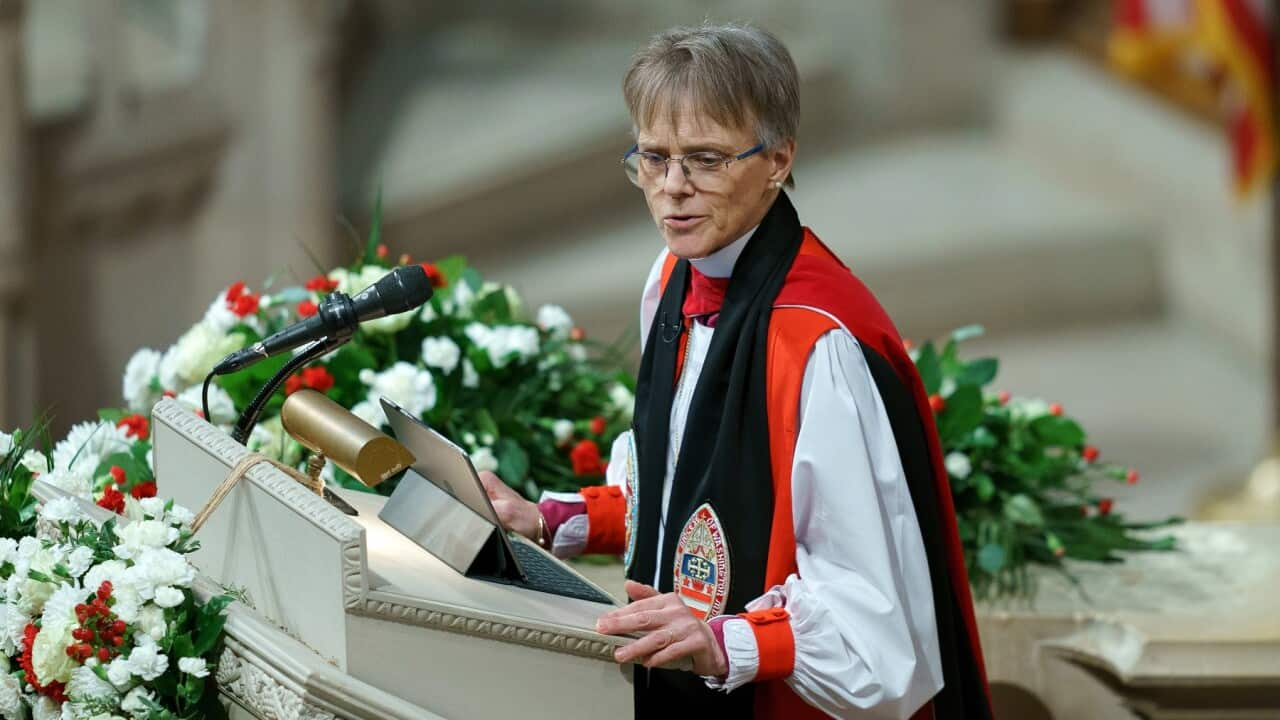TRANSCRIPT
After months of studying their story, 24-year-old Simon Liu packed up his bags in Sydney - and travelled to Japan to meet the group of people known as hibakushas. The Japanese word means "bomb-affected-people".
They were children during the atomic bomb attacks that ended World War Two.
The bombing of Hiroshima and Nagasaki represented the first time that nuclear weapons had been detonated in combat operations.
Mr Liu told SBS Japanese, building the connection with the survivors has been very moving for him.
"Their words were very inspiring and very motivating in terms of what they were doing. What I realised is that not a lot of hibakushas actually share their stories and a lot of them actually would be perhaps not sure how the audience might receive the story or perhaps they might not think themselves as being worthy or, important enough to share that story. But I think from the hibakushas that we've had, talks with, a lot of them were very open about their own experiences as a child during that time. And I guess one thing I learned is that all of them have the same message - and it's that they want countries to disarm nuclear weapons before they die, and that's the only one who wish that they do have before death. It's quite raw and heartbreaking to actually see them and continue pushing through and really sharing their message as much as they can, but they're all very young at heart. And I hope they can continue sharing that message to everyone."
With the hibakushas ageing, the task has now been to find youth leaders to carry forward the task of creating a world without nuclear weapons - getting rid of the stockpile of 12,500 nuclear weapons that still exists.
Mr Liu says it has been quite a journey over the last year being involved in an inaugural program to find the next generation of leaders to convey the present danger from the more technologically advanced nuclear weapons of today.
From 2,000 applicants, 100 were selected to undergo online self-study - before culminating in a week-long visit in Japan, at the very sites of the bombings in Hiroshima and Nagasaki.
Of the final group of 50 included in the study tour, Mr Liu was the only Australian.
He says despite the preparation, he was still amazed at what he learned connecting with the hibakushas.
"The recounting of the circumstances where people are asked not to drink water that was falling on from the sky. And I think that was very traumatic to hear for me because of what the imagery it depicts of children being very thirsty and hoping that they could, you know eat some food or drink some water and seeing rain from the sky, not realising that it's actually very harmful to their body. Another thing could be also them, I guess describing the charred or charcoaled bodies on the street; and not actually recognising whether it was a man or a woman."
In Hiroshima, more than 140,000 people died within months of the atomic bomb attack. Many more would later die from radiation-related illnesses.
In Nagasaki, an estimated 74,000 people died by the end of 1945.
With 56 active conflicts in the world, the most since the end of World War Two [[according to the Global Peace Index 2024]], the threat of nuclear weapons being used in war, is now greater than it’s ever been.
That's according to Nobel Peace Prize laureate Professor Tilman Ruff, a co-founder of the International Campaign to Abolish Nuclear Weapons.
"I think the fundamental reality is that these are the worst weapons of mass destruction. These are designed to - and can only incinerate cities, incinerate millions of innocent civilians; cause chaos catastrophic environmental destruction. And what we now know is that the climate impacts of nuclear weapons would have the biggest toll. Even a relatively small nuclear war, involving just a couple of per cent of the world's nuclear arsenal - a few 100 weapons targeted on cities could produce such massive firestorms that they would loft millions of tonnes of black smoke really high into the atmosphere, where it would spread around world - persist for about a decade. And cool, darken and dry the climate underneath and decimate agriculture."
He says efforts to reach the goal of a world without nuclear weapons have really gained momentum, with the first legally binding agreement to ban nuclear weapons in the UN-negotiated Treaty on the Prohibition of Nuclear Weapons.
More than three years after it came into force, 93 countries have signed up to it - but Australia isn't one of them.
Dr Ruff says the treaty is a necessary step towards a world without nuclear weapons - and Australia should also sign on.
"We have successfully eliminated well over 80 per cent of the nuclear weapons that have ever been built. So we know how to do this. There are only nine states involved. They need to realise that nuclear weapons jeopardise their people as much as anybody's elses. They are not instruments of security. They are instruments of global insecurity."
Set annually by the Bulletin of the Atomic Scientists, the Doomsday Clock is now at 90 seconds to midnight.
The clock shows symbolically how much time is left to avert a human-made global catastrophe.
Russia's nuclear arsenal, Israel's war on Gaza and climate change are driving the likelihood of a nuclear Armageddon - unless there is intervention.
The deputy director of global programs at the Asia-Pacific Obama Foundation, Risa Pieters, says she has a keen awareness of that.
Along with Simon Liu, she is also a youth leader in the program to find the next generation of strategists and communicators in the nuclear disarmament space.
The program - funded by the UN and Japan's government - is set to run until 2030 with new rounds of participants.
Ms Pieters says her perspective on the issue has grown enormously as a result of the program and the related youth-led conference [[the Youth Leader Conference on Nuclear Disarmament in Hiroshima on 29 August 2024]].
Born to a Japanese mother, and growing up in the US, she was always aware of the discrepancy in the stories and histories of atomic bombing taught at school.
"I remember bringing that content home, and asking my mum about it, and her telling me all these stories that were completely different from what I was hearing or learning about at school. So just from an early age seeing the discrepancies in the stories really caught my interest and made me question a lot of things, how things are taught."
She says there is a lot of misunderstanding about what actually happened and the impacts – and it's important that the stories of the hibakushas are re-shared and emphasised.
"I think even recently seen kind of the fanfare around the movie Oppenheimer, and that not including the victim’s voices either, so seeing these gaps in the ways the stories is being told I feel like is urgent work to continue to work with Hibakusha and bring those stories to as many audience as possible."
With the average age of the atomic-bomb survivors now over 85, Ms Pieters says youth leaders hold a crucial role in keeping the torch burning.
“It’s absolutely critical that youth are part of this conversation, that youth are at the table because this is their future as well”
Simon Liu says the whole experience has expanded his perspective - and the role of youth in conveying what is at stake.
"So I think this platform is also an inspiration for youth around the world - and Australian youth - to really believe in themselves. To really take a stand in what they believe could represent the interests of Australia - and also create positive change in the world. I think the second piece is back to the awareness. Nuclear weapons is an existential threat to society with a lot of geopolitical events happening at the moment. It is quite focused on the short-term. But really the long-term consequence of things expanding the way it is - could lead to nuclear weapons being used at a mass scale. And I think that is something that it is important to always be aware. To carry that message across generations - so that it is not lost over time."
Produced in collaboration with SBS Japanese













